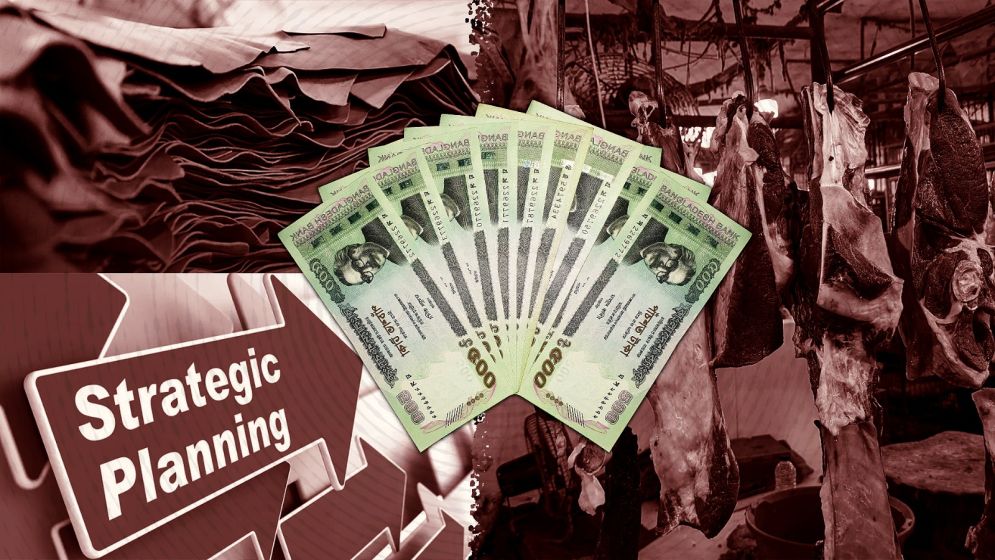Beef price can be reduced down to 500 taka per kg…here is how…

During this Ramadan, the prices of essential commodities have hit their lowest point in years, ushering in a rare moment of relief for consumers.
This decline, however, has not extended to one significant product: meat. The price of beef, in particular, has remained stubbornly unchanged, and should this one price drop, the government's ability to meet the people's expectations would be more than fulfilled.
As both a cattle farmer and meat trader, I, like many others, share the hope that beef will soon become more affordable and accessible to the public.
Yet, there is a tendency for the public to direct criticism at traders when prices rise, as though we are the sole culprits behind rising costs.
In truth, whether the price of goods is high or low, traders, like all businesses, operate within the realities of the market. If the cost of acquisition is high, prices rise.
Conversely, if it drops, prices fall. In both scenarios, our goal remains consistent: to make a profit, not to unfairly burden consumers.
It’s worth noting that no one benefits more than traders when prices decrease. Lower costs drive up sales, benefiting everyone in the supply chain. But when prices rise, traders too feel the sting.
With a notable decline in consumer demand, we are caught between customers' sighs of dissatisfaction and the unvoiced frustrations of our own, rarely acknowledged by the public. Too often, we are put on trial when prices climb.
When compared to Europe and the United States, the per capita consumption of beef in our country is remarkably low.
If the price of beef were to decrease, consumption would undoubtedly rise, benefitting not only the public but the entire cattle industry.
We, as traders, would also see our fortunes improve.
A decrease of 50 to 100 taka per kilogram of beef is achievable—this is not an unattainable dream, but a tangible reality if we take the right steps.
So where can we focus our efforts to bring down the price of beef? Broadly, the solution lies in three key areas: Reducing the price of feed, reducing demand fluctuations and ensuring fair prices for by-products.
Addressing these points could pave the way for a more affordable and sustainable beef industry, one that benefits consumers, traders, and the economy as a whole.
The challenge is not beyond reach, but it requires a coordinated effort to make the necessary changes.

Understanding the
economic realities
Given the current market prices for cattle feed and the yield of our cattle breeds, it is simply not feasible to lower the price of beef below 700-800 taka.
Whether in rural or urban areas, the average cost per cow is between 3,000 and 7,000 taka each month. In return for this investment, we receive about 5-7 kg of meat from local breeds.
While Friesians (a type of cow) produce more meat, their higher costs push the price per kilogram of meat to the same 700-800 taka range.
The agricultural revolution has almost entirely eliminated fallow land in our country, turning grass for cattle feed into a cash crop.
Grass is now bought and sold in village markets, and households often purchase it for their cattle. The price of granular feed, another essential, has reached 40 taka per kilogram. If this cost could be reduced to 20 taka, it might bring down the price of meat.
However, such a reduction seems unlikely, especially given that wheat production is limited in our country and must be imported, mainly from India and the Ukraine-Russia region.
I am uncertain whether global factors could allow for a decrease in these prices.
Corn, a local alternative to wheat, also costs around 30 taka per kilogram. While it might be possible to bring the price down to 20 taka, doing so would hurt corn farmers, likely leading them to cut back on production.
In turn, this would drive prices up again, making the long-term benefit uncertain.
Meanwhile, the price of beef in our country is higher than in India due to differing demand levels. The demand for beef is significantly higher here, pushing up prices, whereas in India, the demand is much lower.
Basic economic principles suggest that beef prices should decrease if demand falls. However, we are working to increase, not reduce, beef consumption, as our per capita consumption is still very low.
Increasing demand will inevitably raise prices, making this option of lowering costs impractical.
Now, the final viable option lies in enhancing the market value of beef by-products. A successful example can be found in the mustard oil market.
Mustard seeds are priced at around 3,000 taka per maund, from which 12-15 liters of oil are extracted.
After accounting for production and transportation costs, the price of one liter of mustard oil is around 200-300 taka, thanks to the strong market demand for mustard oilcake, a by-product.
Mustard oilcake is priced at 40-50 taka, which effectively lowers the overall cost of oil production.

Reviving the leather
industry to lower beef prices
By increasing the market value of beef by-products, we can potentially offset some of the costs and reduce the price of beef in the long term.
Beef production generates numerous by-products—such as horns, hooves, bones, and even cow blood—that all hold financial value.
Cow genitals, for instance, are sold at competitive prices on the international market as pet food, while other by-products like horns, hooves, bones, and blood are used for fish feed and organic fertilizer, all of which have a steady demand.
However, the most valuable by-product of all is leather. The leather from cows, which is often worth 18-20 thousand taka, was once sold for just 3-5 thousand taka.
If we could sell leather from a cow valued at one lakh taka for 15-20 thousand taka, we could reduce the price of meat by 50-100 taka per kilogram without affecting any other factors.
Over the last 15-20 years, the leather industry has been deliberately handed over to India. In 2000, India’s leather industry was valued at 3 billion dollars; today, it’s worth 20 billion dollars, and we have a share in that.
Due to the lack of ETP (Effluent Treatment Plant) and compliance issues, many of our leather clients have moved to India.
While the government shifted leather factories from Hazaribagh to Hemayetpur under the guise of improving ETP standards, a central ETP has yet to be established.
If the ETP were operational and compliance were ensured, we could bring foreign buyers back, restore our leather industry to its former state, and automatically lower the price of beef. This is the key step I am referring to.
The potential for reducing beef prices by cutting cattle feed costs or lowering demand is limited. Any attempt to adjust one area could negatively impact another.
Therefore, the only viable solution left is to reduce beef prices by enhancing the utility of by-products.
This isn’t a new idea or a call to develop a completely new industry. Our leather industry was once thriving but was deliberately abandoned.
We still possess skilled labor, and with a few adjustments, we could restore it. By doing so, beef prices would naturally decrease, and an entire industry would be revived.
Leather itself is not just a by-product; many by-products derived from leather have a significant demand, especially in the fish industry. We already have local demand for these by-products, which are currently imported.
If we stopped importing them, we could reduce dollar expenditures, lower the cost of fishmeal, and reduce the overall production cost of fish. The ripple effects of these changes would be substantial.
As a cattle farmer and beef trader, I believe that with our current grazing land and feed prices, we could provide beef at 500-600 taka per kilogram—if we simply revitalize our leather industry and bring back foreign buyers.
There’s no need to overstate Dr. Yunus’s international connections. A few phone calls from him could ignite the entire leather industry.
All the necessary infrastructure is already in place; it’s simply a matter of making a few bureaucratic adjustments. Before relinquishing your [Dr Yunus’s] power, let’s feed the people affordable beef at 500 taka per kilogram.
—
Sagor Hasnath is a former government employee turned entrepreneur

